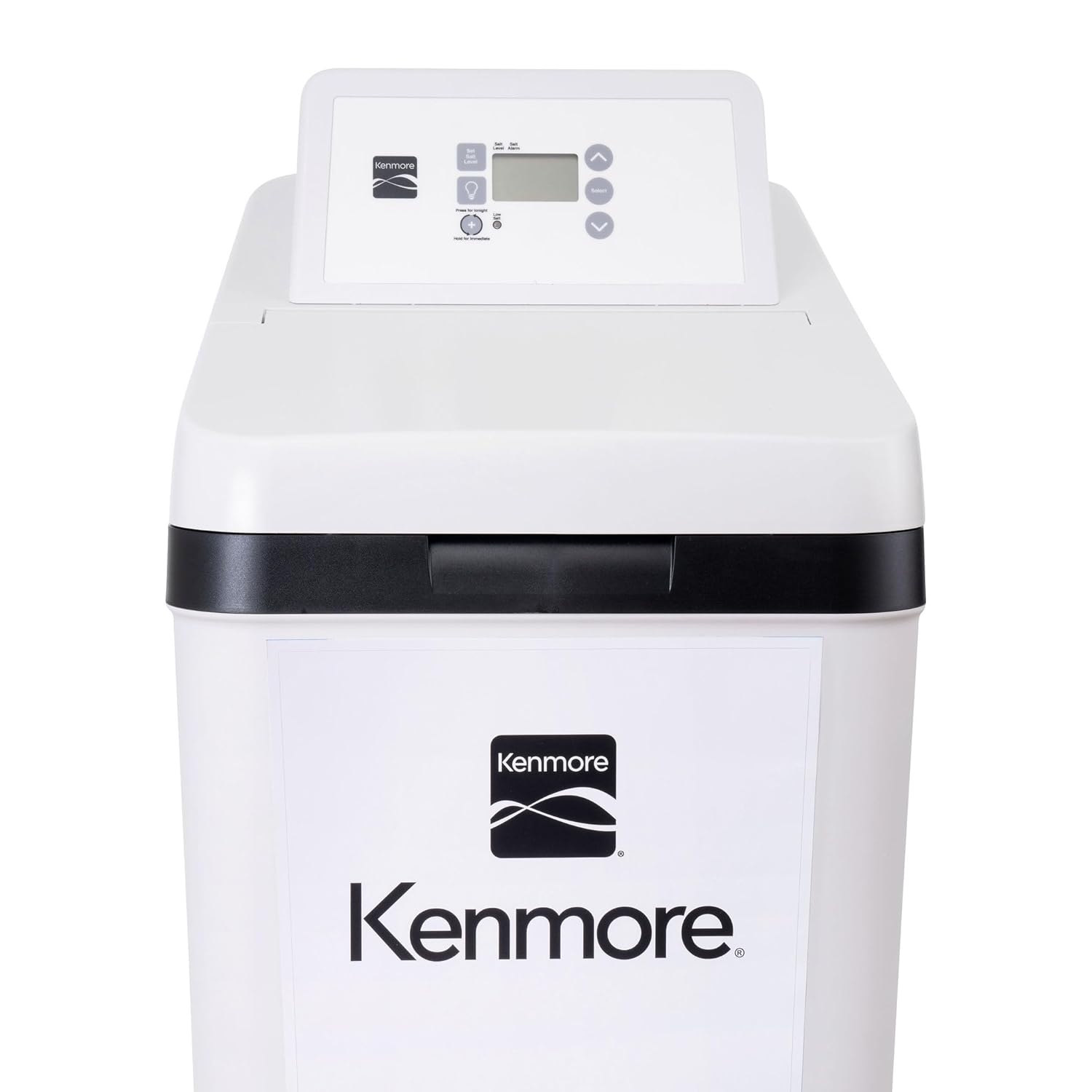Are you searching for a reliable whole-house water softener that reduces hardness and clears iron without taking up too much space?
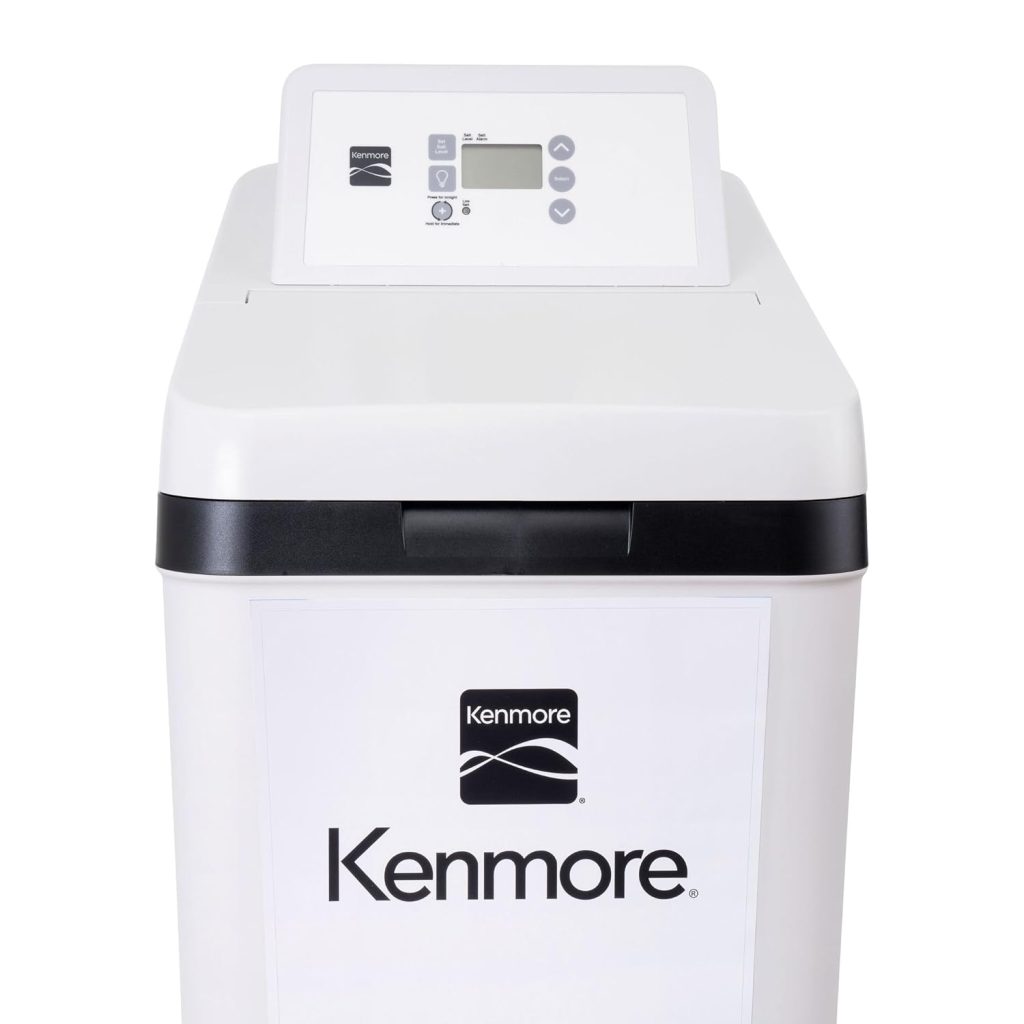
Product Overview: Kenmore 350 Water Softener With High Flow Valve | Reduce Hardness Minerals & Clear Water Iron In Your Home | Whole House | Easy To Install | Grey
This Kenmore 350 water softener is built to handle common household water problems like hard water and iron staining while fitting into tight spaces. You’ll find that it’s positioned as a practical, user-friendly solution that balances performance and convenience for most homes.
What the unit is designed to do
The unit is a 32,000 grain-capacity softener that aims to reduce hardness mineral levels up to 90 grains per gallon (GPG) and clear dissolved iron up to 8 parts per million (PPM). You get a whole-house approach so every faucet and appliance benefits from softened water, which helps protect pipes, fixtures, and appliances.
Main selling points from the manufacturer
Kenmore promotes IntelliSoft Technology that adjusts to your water usage to conserve salt, water, and energy, and a high-flow valve that supports better flow rates through your system. The design emphasizes easy installation, compact dimensions for tight spaces, and an advanced display board for monitoring.
Key Features
This section summarizes the standout features so you can quickly see what matters most when evaluating the unit for your home. You’ll find practical features aimed at savings, maintenance ease, and performance.
32,000 Grain Capacity
With 32,000 grains of softening capacity, this system is aimed at small-to-medium households that experience moderate to high hardness. You should expect several days to weeks between regeneration cycles depending on your household size and water hardness.
IntelliSoft Technology
IntelliSoft adjusts regeneration cycles based on your actual water usage so you’re not wasting salt or water by regenerating on a fixed schedule. When you rely on this adaptive approach, you typically see lower ongoing operating costs and don’t run out of soft water at peak times.
High Flow Valve
The high flow valve helps maintain higher service flow rates so that multiple fixtures can run simultaneously without a big drop in performance. If you often run showers, dishwashers, and washing machines at the same time, this feature helps keep the experience consistent.
Space-Saving Design
The compact footprint makes it possible to install the softener in tighter mechanical rooms, storage closets, or basements where a larger tank might not fit. You’ll appreciate the reduced space demands when retrofitting an older home with a smaller utility area.
Advanced Display Board
An intuitive display board lets you monitor salt levels, time until next regeneration, and current water flow in a single place. You’ll be able to see indicators at a glance so you can plan salt refills and address issues before they become major problems.
Ultra Cleansing Feature (Sediment Screen)
A built-in screen prevents larger particles of sediment from entering your plumbing and protects water-using appliances. This pre-filtration is helpful when your water has visible sediment or particulate matter that could shorten appliance life.
Quick Specs Table
This table gives you a concise breakdown of the most important technical details and what they mean for your home.
| Feature | Specification | What it means for you |
|---|---|---|
| Grain Capacity | 32,000 grains | Handles moderate to heavy hardness for typical households |
| Hardness Reduction | Up to 90 GPG | Effective on most municipal and well water hardness levels |
| Iron Removal | Up to 8 PPM | Reduces dissolved iron that can stain and damage fixtures |
| Valve Type | High Flow Valve | Maintains better water flow under simultaneous usage |
| Technology | IntelliSoft (adaptive regeneration) | Saves salt, water, and energy by regenerating only as needed |
| Design | Compact / space-saving | Easier installation in tight locations |
| Pre-filtration | Built-in screen | Reduces sediment entering plumbing and appliances |
| Controls | Advanced display board | Simple monitoring of salt, flow, and cycle status |
Performance & Water Quality
Performance is where a water softener proves its value, and this model aims to deliver consistent soft water while tackling iron contamination. You’ll want to weigh actual performance against your household water profile.
Hardness Reduction in Practice
A 32,000-grain resin tank will reduce hardness effectively in many homes, and the IntelliSoft control fine-tunes regeneration to match the actual demand. If your household has extremely high hardness or many occupants, you may want to calculate exact grain usage to confirm this capacity fits your needs.
Iron Reduction and Staining Control
This system advertises iron removal up to 8 PPM; that makes it suitable for water supplies with moderate dissolved iron that causes rust-colored staining. For higher iron concentrations or iron bound up with other minerals, you should test your water and consider a dedicated iron filter or pretreatment if necessary.
Regeneration Frequency and Salt Use
Because the controller regenerates based on actual usage, you’ll likely regenerate less often than with timer-based units of similar size. That means reduced salt consumption overall, but keep in mind that heavy iron loads can increase regeneration frequency and salt needs.
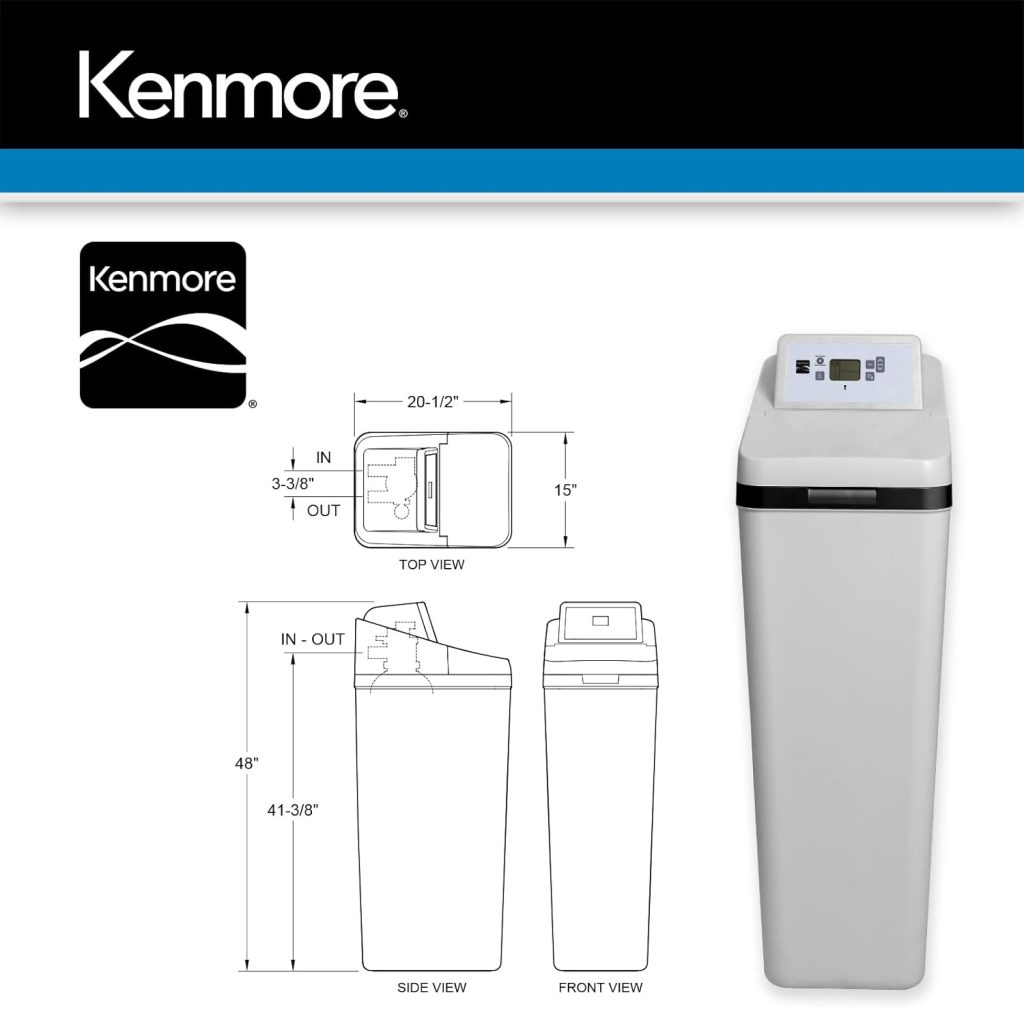
Installation & Fit
Installation ease often determines whether you can do a DIY setup or should call a professional, and this model is designed to be installer-friendly. You’ll find the compact footprint and straightforward connections make for simpler placement and plumbing.
Physical footprint and placement tips
The compact design is helpful if your mechanical room is small, and the unit often fits beside a water heater or in a closet where larger tanks may not. You should check the exact measurements and allow clearance for servicing and salt refilling.
Installation steps (summary)
Typical installation involves locating the unit on your incoming water line, mounting or situating the tank, hooking up the bypass valve and drain line, programming the controller, and adding salt. If you’re comfortable with basic plumbing and have the right tools, you can often install this unit yourself; otherwise, hire a licensed plumber for a clean, code-compliant install.
When to call a professional
If local plumbing codes require permits or if your incoming water line needs upgrades such as a pressure reducer or backflow preventer, you’ll want a pro. Also call a professional if you’re unsure about cutting into the main water line, dealing with electrical outlets for the controller, or configuring complex bypass setups.
Controls & Usability
User-friendly controls reduce frustration and help you get consistent results from your system. The Kenmore 350 focuses on easy monitoring with a clear display and logical settings.
Advanced display board features
The display shows essential metrics like salt level, water flow, current status, and possibly countdowns to the next regeneration cycle. You’ll appreciate not having to guess how much salt remains or whether the system is currently regenerating.
Programming and day-to-day use
Programming tends to be straightforward; you’ll set your preferred time-of-day regeneration and verify capacity settings based on your water test and household usage. On a day-to-day basis, most of your interaction will be checking salt and occasionally confirming the unit has completed its regeneration cycle.
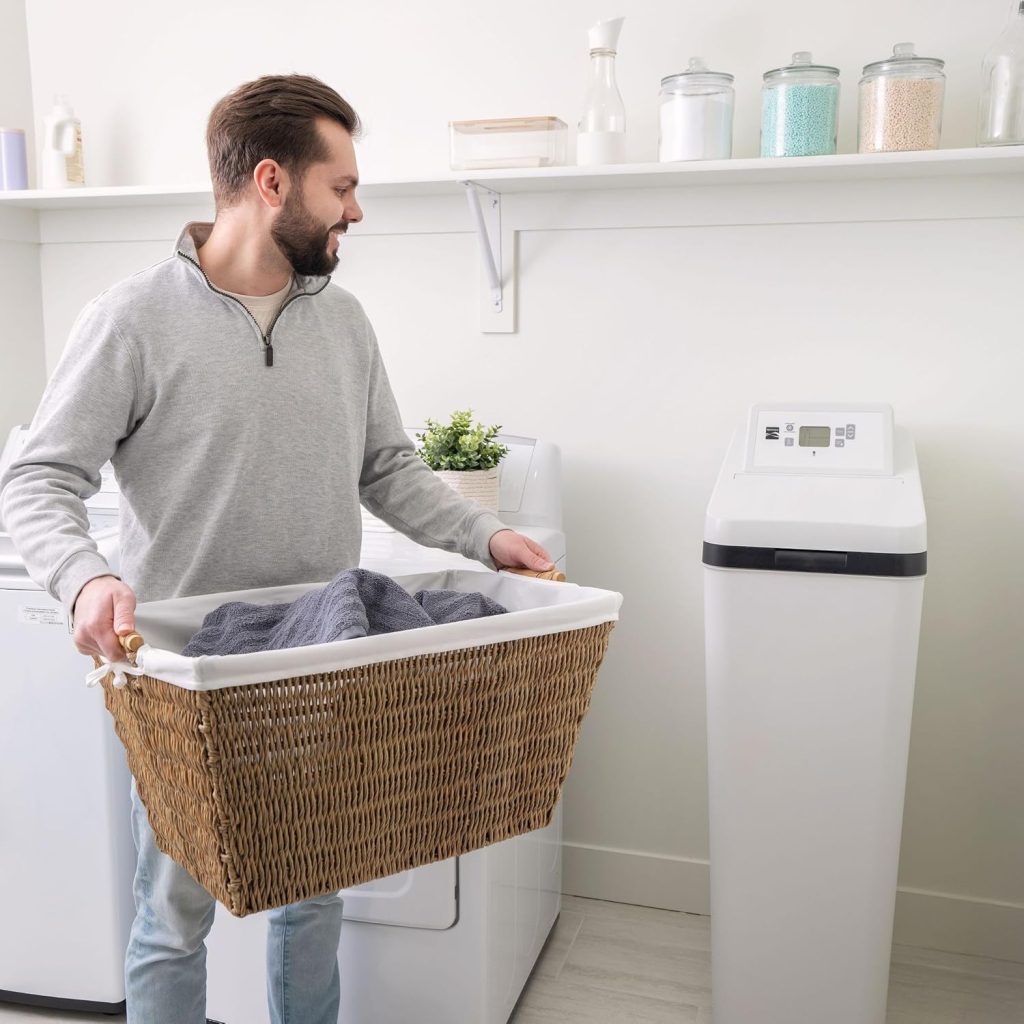
Maintenance & Upkeep
Maintenance is mostly routine but important if you want long service life and reliable soft water. You’ll perform periodic tasks like salt refills and checking for sediment or salt bridging.
Salt replenishment
You’ll need to add salt periodically, and the frequency depends on your hardness level and household water use; heavy users may refill monthly while smaller homes may only need a few refills per year. Choose a high-quality water softener salt and keep the brine tank free of contaminants and large clumps.
Cleaning the resin bed and screen
Over time, the resin bed can benefit from cleaning, especially if your water has iron or organic fouling that reduces exchange capacity. The built-in screen helps capture larger particles, but periodic inspection and cleaning of the screen and brine tank will keep the system operating efficiently.
Preventing salt bridging and mushing
Occasionally salt can form a crust (bridge) or a mushy sludge that reduces brine formation; you’ll avoid this by using the appropriate type of salt (pellets are often best) and checking the brine tank during refills. If you see a hardened layer or mushy sediment, break it up and remove the debris to restore proper function.
Cost & Operating Expenses
Understanding ongoing costs helps you budget for salt, possible prefilters, and occasional service. The IntelliSoft technology aims to lower operating bills compared with timer-based systems.
Initial purchase and installation
The purchase price will vary by retailer and whether you choose professional installation or DIY. If you hire a plumber, include the cost of labor and any additional fittings, permits, or preparatory plumbing work in your budget.
Salt, water, and energy costs
Expect recurring costs for salt and the water used during regeneration; IntelliSoft’s usage-based regeneration reduces unnecessary cycles, which can lower both salt and water bills. Energy costs are typically low since the control uses minimal electricity to run the meter and valve.
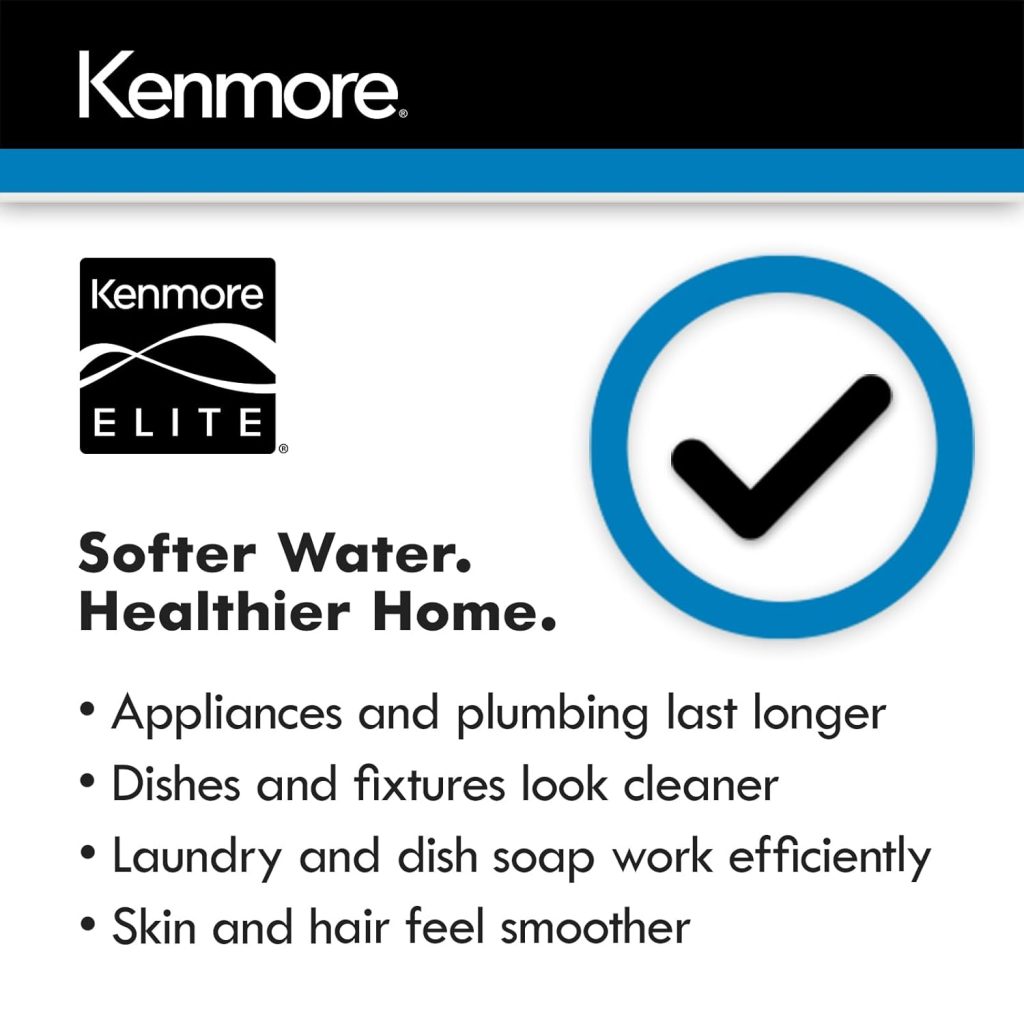
Comparison with Alternatives
Comparing this model to competitors helps you decide whether it’s the best fit for your household and budget. You’ll want to weigh capacity, control type, ease of installation, and features like iron handling.
Kenmore 350 vs. other Kenmore models
Compared to entry-level models, the 350’s 32,000-grain capacity and IntelliSoft control give you smarter regeneration and better iron handling. Higher-end models or much larger grain capacities might suit very large households, but they generally come with a larger footprint and higher cost.
Salt-based softener vs salt-free conditioners
Salt-based softeners like this unit remove hardness ions to prevent scale, while salt-free conditioners often claim to reduce scale but don’t actually remove hardness minerals. If you want true softened water for cleaner dishes, softer clothes, and protection for heaters and boilers, a salt-based system like the Kenmore 350 delivers measurable results.
Pros
This section highlights the most compelling advantages you’ll notice if you choose this system. You’ll get an honest view of the benefits.
- Space-saving footprint. You’ll be able to install the unit in smaller mechanical spaces where other units might not fit.
- IntelliSoft conservation. You’ll likely use less salt and water thanks to adaptive regeneration that responds to your actual usage.
- Effective iron handling. You’ll see reduction in iron staining for moderate iron concentrations up to 8 PPM.
- High flow capacity. You’ll experience better simultaneous faucet performance because of the high flow valve.
- Clear monitoring. You’ll appreciate the advanced display for checking salt levels and operational status.
Each of these points combines to provide a comfortable daily experience and lower ongoing costs compared to less intelligent systems.
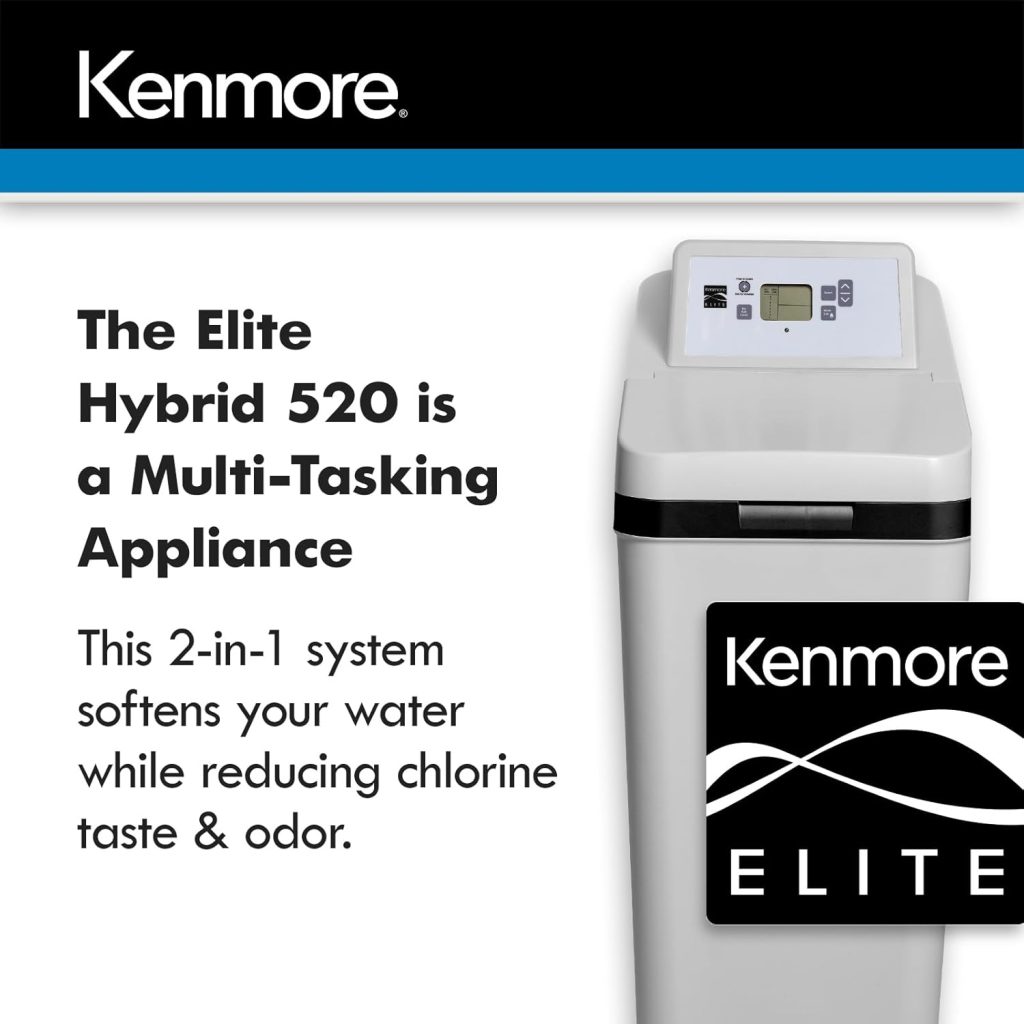
Cons
It’s important to be realistic about limitations so you can make the right choice for your situation. You’ll want to consider these potential downsides.
- Not a heavy-duty commercial unit. If you have extremely high hardness or a very large household, you might need a larger-capacity model. You’ll want to calculate grain usage to be sure this size fits.
- Salt-based system maintenance. You’ll have to refill salt and occasionally break up bridges or clean sediments, which adds minor maintenance tasks to your routine. If you prefer a maintenance-free solution, salt-free systems might appeal more, though they don’t actually remove hardness ions.
- Iron limit. If your water has iron levels above 8 PPM or significant particulate iron, you’ll likely need pre-treatment or a specialized iron filter to avoid frequent regeneration and resin fouling.
These considerations don’t negate the value of the unit but help you plan so you get the performance you expect.
Who This Product Is Best For
This section helps you decide whether the Kenmore 350 aligns with your needs and household circumstances. You’ll find clear indicators about which buyers will gain the most value.
- Families and households of up to 4–5 people with moderate to high hardness and moderate iron levels. You’ll get reliable soft water for daily needs without excessive regeneration cycles.
- Homeowners with limited mechanical room space. You’ll benefit from the compact design if you have small basements or closets.
- People wanting a balance of cost, convenience, and performance. You’ll appreciate IntelliSoft’s savings and the high flow valve without paying for a very large or industrial-grade system.
If your home has very high iron or you need a commercial-scale solution, consider sizing up or adding a pretreatment system.
Common Questions & Answers
You probably have specific questions about installation, performance, and maintenance. These answers address the most frequent concerns so you can plan confidently.
How do I know if the 32,000-grain capacity is enough for my home?
Check your water hardness in grains per gallon and multiply by daily water usage to estimate daily grain removal; this helps you calculate how often the softener will regenerate. If you prefer a quick rule, small families often find 32,000 grains sufficient, while larger households or very hard water may require a larger model.
Will this unit remove iron completely?
This system will reduce dissolved iron up to 8 PPM, which is effective for many households experiencing rust stains and taste issues. If your water contains particulate iron or levels above 8 PPM, you should test and consider pretreatment or a dedicated iron filter.
Can I install the Kenmore 350 myself?
If you’re comfortable with basic plumbing, a few common tools, and following the manufacturer’s instructions, you can install it as a DIY project. If local codes require permits or you have complex piping, hire a licensed plumber for a safe and compliant installation.
How often will the system need salt?
Salt use varies by household size, hardness, and iron content; with IntelliSoft you’ll generally regenerate only when necessary, reducing salt use compared with timer models. Monitor salt levels with the display and plan to refill before the tank drops too low to avoid missed regenerations.
What maintenance will I need to perform?
Regular tasks include topping up salt, checking for salt bridging, cleaning the brine tank if needed, and inspecting the inlet screen or sediment screen periodically. Schedule more thorough resin cleaning if you notice reduced softening performance or excessive iron fouling.
Will this softener affect water pressure?
With the high flow valve, pressure drop is minimized under normal residential loads, though any softener introduces a minor pressure differential. If you have very high flow demands, check the manufacturer’s flow specifications and consult a plumber.
What kind of salt should I use?
High-purity pellet salt is often recommended because it reduces bridging and sediment compared with rock salt. You’ll keep the brine tank operating smoothly by using clean, soluble salt labeled for water softeners.
How long does the resin last?
Resin life varies with water quality and maintenance; with proper care (regular regenerations, pretreatment for iron, and occasional cleaning), resin can last many years. If you suspect resin degradation (loss of softening capacity despite correct operation), testing and replacement may be necessary.
Troubleshooting Tips
Every system encounters occasional issues; these tips help you diagnose common problems and determine when to call a pro. You’ll save time by assessing simple fixes before scheduling service.
Low or reduced soft water performance
Check salt levels and the brine tank for salt bridges first, then confirm the control is set correctly and that resin is not fouled by iron. If basic checks don’t restore performance, test your water to see if iron or chlorine or other contaminants are damaging the resin.
Frequent regenerations
If the unit regenerates often, verify household water usage and hardness settings in the controller; high iron or incorrect settings can cause excessive cycles. Consider pretreatment for iron or adjusting capacity settings after confirming accurate water test results.
Salt bridging or mushing
Tap the sides of the brine tank gently to break up a bridge if you see a hard crust, then remove hardened salt if necessary. Switch to higher-quality pellet salt to minimize this problem in the future and periodically inspect the tank after refills.
Visible sediment or rust in water
Check the built-in screen and inlet plumbing for clogs; if the water has particulate iron or sand, a sediment prefilter may be necessary. If staining persists, test for dissolved iron and consider a specialized iron filter or oxidizing filter as a pretreatment step.
Installation Checklist & Purchase Tips
Before you buy and install, use this checklist to prepare and avoid surprises. You’ll make the process smoother and ensure the softener meets your home’s needs.
- Test your water for hardness, iron, pH, and other contaminants. You’ll need this to size the system and determine pretreatment needs.
- Measure the available space and check clearances for salt refilling and servicing. You’ll avoid cramped installations and make maintenance easier.
- Review local plumbing codes and check whether a permit or licensed installer is required. You’ll save time and ensure compliance.
- Confirm drain and electrical access near the installation point. You’ll need a proper drain for regeneration wastewater and a small electrical outlet for the controller.
- Choose the right salt type and stock it in advance. You’ll start with the best practice for the system and avoid inferior salt that causes bridging.
Final Verdict
If you want a compact, smartly controlled, salt-based softener that handles moderate hardness and iron, the Kenmore 350 is a compelling option for many homes. You’ll benefit from IntelliSoft savings, the high-flow valve for better simultaneous usage, and a footprint that fits tighter spaces while still providing whole-house protection.
Disclosure: As an Amazon Associate, I earn from qualifying purchases.


